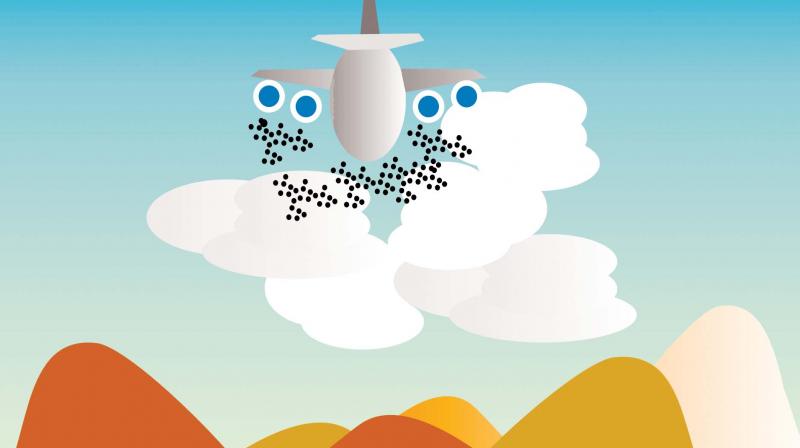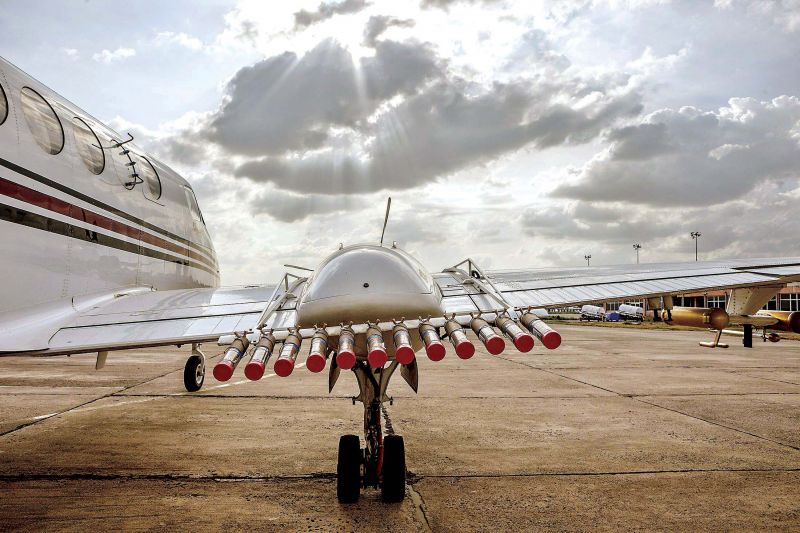Rain on demand: Cloud seeding to Karnataka's rescue?
Pointing out that except for Bidar, Gulbarga and parts of Uttara Kannada districts, the entire state was affected by drought last year.

Bengaluru: With the state having suffered successive droughts over the last two years and the monsoon forecast being dismal this year too, the government has decided to go in for cloud seeding to come to the people's rescue.
Speaking to reporters here on Thursday, Agriculture Minister, Krishna Byregowda said a Detailed Project Report (DPR) was being prepared and a committee comprising cloud seeding experts and other experts from the Indian Institute of Science and the Karnataka State Natural Disaster Monitoring Centre (KSNDMC) had been formed to oversee the process.
A former director of the Indian Institute of Tropical Meteorology (IITM), a scientific institution working to expand research into the meteorology of the tropics with special reference to the monsoon meteorology of India, had been roped in as a consultant, he added.
Explaining that scientific data was available to prove that cloud seeding helped accelerate rain, especially during an active monsoon, the minister said besides the cabinet, the programme would have to be approved by the Director General of Civil Aviation (DGCA) as the aircraft used would be especially modified to carry it out.
"The cost of cloud seeding may shoot up if it is done for both North and South Karnataka as two different aircrafts and radars will have to be used," he said, disclosing that it would take least two months to do the actual cloud seeding as global tenders would have to be floated to award the contract for it.
Meanwhile, speaking to the Deccan Chronicle, Mr Srinivasa Reddy, director, KSNDMC, said the committee formed by the government would meet on April 24 to work out a strategy for the cloud seeding. Although there is much scepticism about the success rate of cloud seeding world-wide, it can improve rainfall by at least 20 per cent in his view.
Pointing out that except for Bidar, Gulbarga and parts of Uttara Kannada districts, the entire state was affected by drought last year, he insisted that cloud seeding was imperative to save the people from more distress.
 Cloud seeding is a form of weather modification, to change either the amount or type of precipitation by dispersing substances into the air that serve as cloud condensation or ice nuclei, and alter the microphysical processes within a cloud.
Cloud seeding is a form of weather modification, to change either the amount or type of precipitation by dispersing substances into the air that serve as cloud condensation or ice nuclei, and alter the microphysical processes within a cloud.
Cloud seeding secrets
1 Cloud seeding is a form of weather modification to induce rain.
2 A salt and water solution/silver iodide is used (150 kg salt to 10,000 litres). The solution is placed in containers.
3 An aircraft lifts the containers into the sky. The plane enters the clouds, usually 1,524 to 4,200 m above ground.
4 Crewmen spray the saltwater solution into the clouds.
5 The solution encourages the formation of ice particles. If sufficient the particles becomes heavy enough to fall as rain.
6 Typically, rain falls within 15-20 minutes of cloud seeding.
In the past
- 2002 – 03: Cloud seeding was done when S.M. Krishna was chief minister
- 2012-13: Cloud seeding was again done when Jagadish Shettar was chief minister. But it rained in areas bordering Andhra Pradesh.
- In 2014 it was done in Madikeri and was successful. Farmers were agitated as they suffered severe crop loss.
- June to October is the best time for cloud seeding
- it has a 10 % to 15 % success rate the world over.
What’s seeding?
Cloud seeding is a form of weather modification, to change either the amount or type of precipitation by dispersing substances into the air that serve as cloud condensation or ice nuclei, and alter the microphysical processes within a cloud. The usual intent is to increase precipitation , but hail and fog suppression are also widely practiced at airports.

